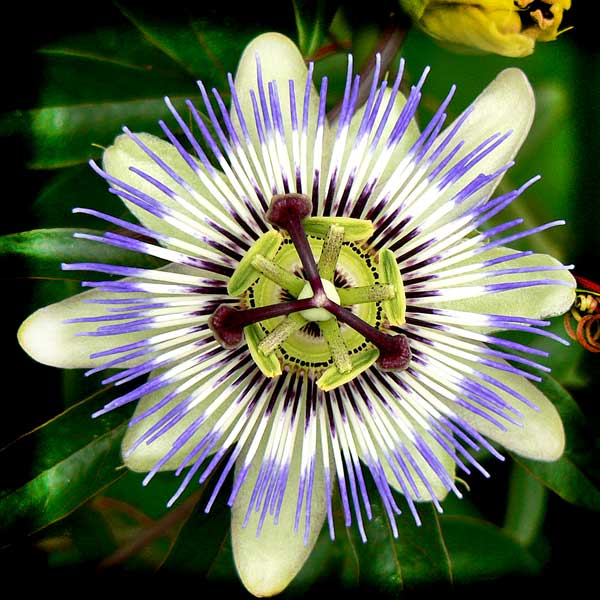Living in California as I do, tacos aren’t just for Tuesdays–they are a way of life. There are taco trucks on nearly every corner, each ready to provide you with their own particular take on carne asada, al pastor, and spicy pollo soft tacos. And requisite with every order, at least for me, is a tall icy glass of Agua de Jamaica.
Agua de Jamaica, or iced hibiscus tea, is nothing like its hot tea counterpart. This cold beverage is tangy, fruity, and incredibly refreshing on a hot day. Some taco stands keep it simple with just hibiscus flowers steeped in water and sweetened with sugar, but my personal favorite versions add cinnamon, lime, and fresh ginger to the mix.
While working on my book Hard Seltzer, Iced Tea, Kombucha, and Cider, I decided to make a slightly boozy version for my taco nights at home by first creating a fermented base and then adding hibiscus, black tea, cinnamon, lime, and ginger. Think: Agua de Jamaica meets hard iced tea. The whole process takes about 3-4 weeks and is mostly hands-off. The finished result is a fizzy, sweet-tart, ruby-hued drink that is the perfect companion to a plate of tacos.
Agua de Jamaica Hard Iced Tea Recipe
Average ABV: 4.5 to 5.5%
Yields: About 1 gallon
TRY THIS! Mint is a great addition to Agua de Jamaica. Try adding 1/4 cup of loosely packed fresh leaves along with the other flavoring ingredients.
1 gallon spring, artesian, or reverse osmosis water
12 ounces (2 1/4 cups) corn sugar for fermentation, plus 1 ounce (3 tablespoons) for bottling
1/2 tsp. champagne yeast
1 tsp. yeast nutrient
10 bags or 3 heaping Tbsp. organic loose-leaf black tea
1/4 ounce (1/2 cup) dried hibiscus flowers
1 organic cinnamon stick
1 lime (strips of zest and juice)
2 Tbsp. roughly chopped ginger
Lime wedges, for garnish
Simple syrup (optional)
Day 1
Sanitize your fermenter, airlock, and whisk. In the fermenter, combine the water, 12 ounces of the corn sugar, and the champagne yeast. Whisk until the corn sugar is dissolved and the liquid is foamy on top, 30-60 seconds. Seal the fermenter, fill the airlock with sanitizer, and insert it into the fermenter.
Pro Tip: Corn sugar is best for homebrewing because it dissolves easily and is neutral-tasting after fermentation. Other sugars like granulated sugar, brown sugar, or honey can be used but need to be dissolved in hot water (which then needs to cool before adding the yeast) and will alter the flavor of your finished beverage. Sugar substitutes like Stevia or Splenda cannot be used to make fermented beverages, though they can be used to sweeten the finished product.
Place the fermenter somewhere dark, slightly warm (70°-80°F), and out of the way. You should start to see signs of fermentation (like bubbling in the airlock) within 24-48 hours.
Day 2
In a small, sanitized measuring cup, dissolve 1/2 teaspoon of the yeast nutrient in 2 tablespoons of warm water. Add to the fermenter, reseal, and replace the airlock. Swirl gently to distribute and return to your fermentation spot.
Day 3
In a small, sanitized measuring cup, dissolve 1/4 teaspoon of the yeast nutrient in 2 tablespoons of warm water. Add to the fermenter, reseal, and replace the airlock. Swirl gently to distribute and return to your fermentation spot.
Day 4
In a small, sanitized measuring cup, dissolve the remaining 1/4 teaspoon yeast nutrient in 2 tablespoons of warm water. Add to the fermenter, reseal, and replace the airlock. Swirl gently to distribute and return to your fermentation spot.
Days 5 to 14
Active fermentation will peak around Day 5 and then mostly finish around Day 7. Anytime between Day 7 and Day 10, add the tea along with the hibiscus, cinnamon, lime zest and juice, and ginger to the fermenter and infuse for at least 3 days or up to 7 days.
After adding flavorings, you may see renewed signs of fermentation, though less vigorous than originally. Once you see no more signs of fermentation (like bubbles in the airlock), you can assume fermentation is complete. Wait another 24 hours to be safe, then proceed with bottling.
Bottling Day
When you’re ready to bottle, sanitize a liquid measuring cup, spoon, large pot (1 gallon or larger), siphon, bottle filler, bottles, and caps. In the measuring cup, combine the remaining 1 ounce corn sugar with 1/2 cup of water and stir to dissolve. Pour this sugar water into the pot.
Siphon the hard iced tea into the pot with the sugar water, leaving behind the tea bags and any solids. Attach the bottle filler to your siphon, transfer the hard iced tea into the bottles, and cap.
Store somewhere cool, dark, and out of the way for 1 to 2 weeks to carbonate, or for up to 3 months.
How to Enjoy
Chill before enjoying and serve with garnish if desired. For a sweeter drink, add a splash of simple syrup before serving.
Want to learn HOW TO MAKE OTHER HARD BOTANICAL BEVERAGES?
Check Out Emma's New Book,
Hard Seltzer, Iced Tea, Kombucha, and Cider














